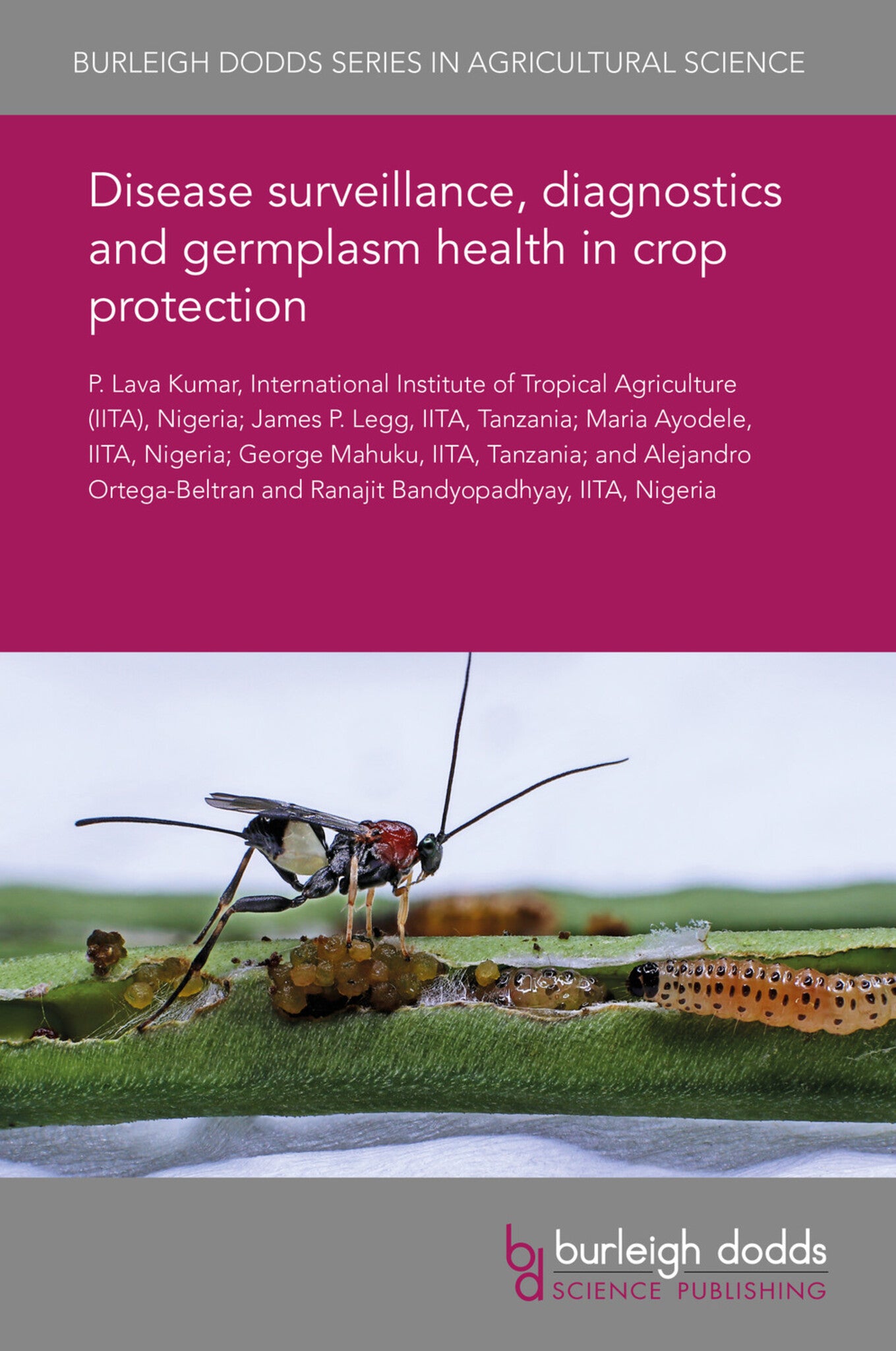We're sorry. An error has occurred
Please cancel or retry.
Disease surveillance, diagnostics and germplasm health in crop protection
Dr p. lava kumar,
Dr james p. legg,
Dr maria adoyele,
Dr george mahuku,
Dr alejandro ortega-beltran,
View More
Dr ranajit bandyopadhayay
Regular price
£25.00
Sale price
£25.00
Regular price
£25.00
Unit price
/
per
Sale
Sold out
Re-stocking soon
Diseases caused by a range of established and emerging pathogens such as bacteria, fungi, oomycetes and viruses are among the persistent factors for the reduction in crop yields across sub-Saharan ...
Read More

Some error occured while loading the Quick View. Please close the Quick View and try reloading the page.
Couldn't load pickup availability
- Format:
-
07 February 2019

Diseases caused by a range of established and emerging pathogens such as bacteria, fungi, oomycetes and viruses are among the persistent factors for the reduction in crop yields across sub-Saharan Africa (SSA). Most damaging diseases are caused by introduced exotic pathogens and by locally evolved pathogens infecting introduced crop species. Expansion of the geographic range of established pathogens and introduced new pathogens has caused destructive epidemics and pandemics in large swaths of farmlands during the last three decades in SSA. Since establishment in 1967, IITA has prioritized disease control of its mandate crops and made remarkable progress during the past 50 years to negate their destructive impact through breeding for host resistance, integrated control tactics and preventive management. This chapter summarizes advances in disease control and ongoing efforts in disease diagnostics, surveillance and germplasm health protection.

Price: £25.00
Publisher: Burleigh Dodds Science Publishing
Imprint: Burleigh Dodds Science Publishing
Series: Burleigh Dodds Series in Agricultural Science
Publication Date:
07 February 2019
ISBN: 9781838797515
Format: eBook
BISACs:
TECHNOLOGY & ENGINEERING / Agriculture / Sustainable Agriculture, Pest control / plant diseases, TECHNOLOGY & ENGINEERING / Agriculture / Agronomy / Crop Science, TECHNOLOGY & ENGINEERING / Pest Control, Sustainable agriculture, Agronomy and crop production

1 Introduction 2 Disease surveillance 3 Factors for emergence and re-emergence of epidemics in SSA 4 Tools for disease diagnostics 5 Early warning and response systems 6 Germplasm safety and preventing the spread of seed-borne pathogens 7 Conclusion and future trends 8 References



